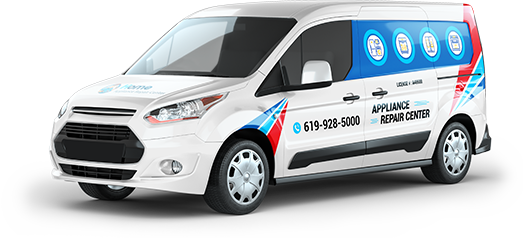An oven is a versatile appliance that offers a variety of cooking modes to accommodate different recipes and cooking techniques. From conventional baking to convection roasting, understanding how to make the best use of the available cooking modes can enhance your culinary skills and improve cooking results. Additionally, optimizing energy efficiency is crucial for reducing energy consumption and operating costs while minimizing environmental impact. In this article, we’ll explore essential tips for maximizing cooking modes and maintaining energy efficiency in your oven, allowing you to achieve delicious dishes while conserving energy.
Understanding Oven Cooking Modes
Modern ovens are equipped with a range of cooking modes designed to provide precise control over temperature, airflow, and cooking time. Common cooking modes found in ovens include:
Conventional Bake: The standard baking mode where heat emanates from the bottom heating element, providing even heat distribution for baking cakes, cookies, and casseroles.
Convection Bake: Utilizes a fan to circulate hot air evenly throughout the oven cavity, resulting in faster and more uniform baking, ideal for roasting meats and vegetables.
Convection Roast: Similar to convection bake but with higher heat levels, perfect for achieving crispy exteriors and juicy interiors when roasting meats.
Broil: Directs heat from the top heating element to quickly cook and brown foods, such as meats, fish, and vegetables, positioned on the top rack.
Warm: Maintains a low temperature to keep cooked dishes warm without further cooking, ideal for holding food until serving time.
Tips for Making the Best Use of Cooking Modes
Understand Each Cooking Mode:
Familiarize yourself with the different cooking modes available in your oven and their respective functions. Experiment with each mode to understand how they affect cooking results and adapt recipes accordingly.
Choose the Right Mode for Each Recipe:
Select the appropriate cooking mode based on the recipe requirements and desired cooking outcome. For example, use convection bake for even browning and faster cooking of baked goods, while convection roast is ideal for achieving crispy textures on meats and vegetables.
Adjust Cooking Time and Temperature:
When using convection modes, reduce the cooking temperature by 25°F (15°C) and shorten the cooking time to account for the increased airflow and faster cooking process. Monitor the cooking progress closely, especially when trying new recipes or adjusting cooking times and temperatures.
Use Multiple Racks Efficiently:
Maximize oven capacity and efficiency by utilizing multiple racks when cooking multiple dishes simultaneously. Arrange dishes evenly on the racks to ensure proper airflow and even cooking results. Rotate dishes halfway through the cooking process to promote uniform browning and avoid hot spots.
Preheat the Oven:
Preheating the oven ensures that it reaches the desired cooking temperature before adding food, promoting consistent cooking results and reducing overall cooking time. Follow the manufacturer’s recommendations for preheating times based on the selected cooking mode.
Maintaining Energy Efficiency in Your Oven
Keep the Oven Door Closed:
Avoid frequent opening and closing of the oven door during cooking, as it allows heat to escape and prolongs cooking times. Use the oven light and window to monitor cooking progress instead of opening the door unnecessarily.
Use Oven Timers and Delayed Start:
Take advantage of oven timers and delayed start functions to optimize energy usage and cooking efficiency. Set timers to alert you when dishes are done cooking to prevent overcooking and unnecessary energy consumption.
Cook with Efficiency in Mind:
Plan meals that allow for efficient use of the oven, such as cooking multiple dishes simultaneously or using residual oven heat to bake or roast additional items after the main dish is done. Batch cooking and meal prep can also help reduce the frequency of oven usage and energy consumption.
Optimize Oven Size:
Choose the appropriate oven size for your cooking needs to avoid excessive energy usage. A smaller oven may be sufficient for smaller households or occasional baking, while a larger oven may be necessary for large gatherings or frequent cooking.
Clean and Maintain Regularly:
Keep the oven interior, door seals, and ventilation system clean and free of debris to ensure optimal heat distribution and airflow. Regular maintenance, such as replacing worn gaskets and cleaning oven vents, helps maintain energy efficiency and prolong the lifespan of the appliance.
Maximizing cooking modes and maintaining energy efficiency in your oven are essential for achieving delicious cooking results while minimizing energy consumption and operating costs. By understanding the functions of different cooking modes, selecting the appropriate mode for each recipe, and following energy-saving tips, you can optimize oven performance and reduce environmental impact. Incorporate these tips into your cooking routine to enjoy efficient and sustainable cooking with your oven for years to come.
If you’re having a problem with a home appliance, the best option is to contact us at HOME APPLIANCE SERVICE CENTER – the leading Repair Service Provider in San Diego. Our superior performance, accuracy, knowledge and experience make us the top choice for your repair needs. Plus, our friendly attitude and free maintenance consultation make us even more appealing. And, our after-service warranty is unbeatable. We’re open 24/7, including weekends and holidays, and in emergencies, an engineer will arrive at your door within 15 minutes of your call. So, don’t hesitate – give us a call, and HOME APPLIANCE SERVICE CENTER will solve any problem.
Contact us
 619-928-5000
619-928-5000  Request Service
Request Service 
